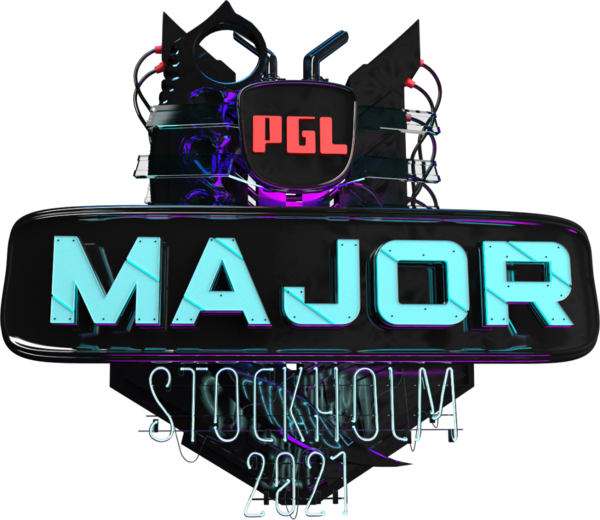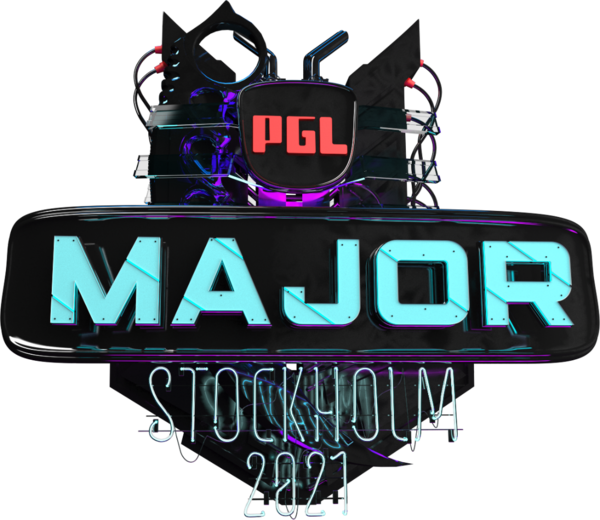PGL Copenhagen Major Technical Issues: A Critical Look from an Audio Engineer The PGL Copenhagen Major 2024 Counter-Strike 2 tournament was undoubtedly a thrilling spectacle for fans worldwide.

The PGL Copenhagen Major 2024 Counter-Strike 2 tournament was undoubtedly a thrilling spectacle for fans worldwide. However, beneath the surface of intense gameplay and nail-biting matches, lurked a series of technical difficulties that significantly impacted the viewing experience. As AudioAce, a 40-year-old professional audio engineer with 15 years of experience working on live esports events (including past Counter-Strike tournaments like IEM Katowice) and a Counter-Strike veteran since the Half-Life mod days, I couldn't help but notice the shortcomings in the broadcast's technical execution, particularly regarding audio fidelity, observer perspectives, and stream stability. The issues weren't just minor annoyances; they detracted from the overall quality of the event and, frankly, were a disservice to the dedicated players and passionate fanbase. These problems need to be addressed to secure a smooth broadcast in the future.
The Audio Nightmare: Desync and Disappointment
One of the most glaring issues throughout the PGL Copenhagen Major 2024 was the persistent audio desync. In-game sounds, caster commentary, and even pre-recorded segments were noticeably out of sync, sometimes by as much as five seconds. In a game where split-second decisions can determine the outcome of an entire round, this delay created a jarring disconnect between what viewers were seeing and what they were hearing.
This wasn't just a minor inconvenience. Imagine watching a crucial clutch play, seeing a player perfectly time a grenade throw, only to hear the explosion several seconds later. It completely ruins the tension and excitement of the moment. The audio desync was a pervasive problem that plagued nearly every broadcast, undermining the overall viewing experience. It’s a basic requirement that esports audio quality solutions are a necessity to deliver a professional broadcast.
The community outcry was immediate and vocal. A quick glance at social media revealed a torrent of complaints:
- "This audio is a DISASTER! Unwatchable," exclaimed one frustrated viewer on Twitter.
- "The audio desync is actually making me nauseous," commented another on Reddit's r/GlobalOffensive.
- "PGL, please get your audio sorted! It's ruining the entire Major," pleaded a viewer on the Twitch chat.
As someone who's spent years ensuring pristine audio quality at live esports events, I was frankly appalled. Audio desync is a problem that, with proper planning and execution, is entirely avoidable. I understand that any live production will have some issues, but with the budget and resources available to this event, a complete audio failure of this magnitude is unacceptable.
Solutions for Audio Desync Issues
To prevent similar audio disasters in future Counter-Strike tournaments, I propose the following:
- Implement a Standardized Audio Monitoring System with Real-Time Delay Correction: A dedicated audio monitoring system is crucial. This system should allow audio engineers to monitor the audio output at various points in the broadcast chain and identify any potential delays in real-time. Additionally, the system should include tools for automatically correcting these delays, ensuring that audio and video remain synchronized throughout the broadcast. Software like Dante Virtual Soundcard and a quality delay compensation tool such as those offered by Waves could greatly improve the situation.
- Invest in Redundant Audio Systems: Redundancy is key to preventing disruptions caused by equipment failures. Multiple microphones, interfaces, and mixing consoles should be set up as hot backups in case the primary devices fail, preventing disruption to the broadcast.
- Set Up a Proper Mixing Environment: Invest in soundproof booths and top audio mixing equipment for audio engineers to focus on their mixing with no distractions. This can prevent audio issues, which should be a top priority for a successful broadcast. The cost to set up top of the line mixing gear will be worth it to prevent a disaster such as this.
Observer Perspective Problems: Missing the Action

Beyond the audio issues, the PGL Copenhagen Major also suffered from inconsistent observer perspectives. Far too often, the broadcast would switch to a different player or a wide-angle view at the precise moment a crucial frag was about to occur. This resulted in viewers missing out on key moments and feeling disconnected from the action. The PGL Copenhagen observer perspective was too shaky, so viewers were unable to properly view the match.
The observer is essentially the director of the broadcast, guiding viewers through the most important moments of the game. When the observer fails to anticipate and capture these moments, it significantly diminishes the viewing experience. The observer team can be trained to avoid these issues in the future.
Again, the community voiced their frustration:
- "Observer is asleep at the wheel, missing all the crucial plays," one Redditor commented.
- "Seriously, how hard is it to follow the player with the AWP?" asked another on the HLTV forums.
- "I feel like I'm watching a highlight reel of missed opportunities," lamented a viewer on Twitter.
Steps to Improve Observer Capabilities
Here's how to correct observer malfunctions:
- Training Observers on Advanced Camera Switching Techniques: Observer teams need to be thoroughly trained on advanced camera switching techniques, including anticipation, player tracking, and strategic awareness. They should be intimately familiar with the game's mechanics, player tendencies, and common engagement zones.
- Utilizing Real-Time Data Analytics: Implement real-time data analytics to provide observers with insights into player positions, weapon selections, and engagement probabilities. This data can help observers anticipate potential action and proactively switch to the most relevant perspectives.
- Implementing a Review System for Observer Work: A review system of some sort can prevent errors from happening again and help observers improve, leading to a superior broadcast in the future.
Stream Stutters: A Frustrating Interruption

Finally, the PGL Copenhagen Major stream was plagued by frequent stutters, buffering issues, and resolution drops. These interruptions, often caused by inconsistent bitrate and server instability, disrupted the flow of the broadcast and left viewers feeling frustrated.
In today's age of high-speed internet and advanced streaming technologies, there's simply no excuse for a major esports tournament to suffer from such basic streaming problems. Viewers expect a smooth, reliable, and high-quality viewing experience, and anything less is simply unacceptable. PGL copenhagen major stream issues need to be solved to prevent the loss of viewers.
As expected, the community took to social media to express their dissatisfaction:
- "Stream keeps freezing! Fix your servers, PGL!" exclaimed one exasperated viewer.
- "Constant buffering is killing the hype," complained another.
- "My internet is fine, it's your stream that's the problem!" declared a frustrated fan.
Upgrades for Stream Stability
These upgrades can prevent stream stuttering:
- Investing in Redundant Streaming Servers with Automatic Failover Capabilities: To ensure stream stability, PGL and other tournament organizers should invest in redundant streaming servers located in geographically diverse regions. These servers should be configured with automatic failover capabilities, meaning that if one server experiences issues, the broadcast will seamlessly switch to another server without interrupting the viewing experience.
- Implementing Adaptive Bitrate Streaming (ABS): ABS technology allows the stream's bitrate to automatically adjust based on the viewer's internet connection speed. This ensures that viewers with slower connections can still watch the broadcast without experiencing buffering or stuttering.
- Monitor Server Performance: Always monitor server performance to ensure a smooth broadcast. This will help prevent any issues that may disrupt the stream and frustrate viewers.
The Copenhagen Glitch
Suddenly, a perfectly rendered AWP shot in Counter-Strike 2 freezes mid-air, distorted by intense pixelation and a jarring, ear-splitting static noise. Rapid cuts between the frozen game image and close-ups of frustrated viewers watching on their phones/laptops, illuminated by the harsh blue light of their screens. The style is deliberately amateurish, mimicking a quickly-edited rant video, with handheld camera movements and shaky framing. Lighting is primarily dim and cold, reflecting the frustration of the scene. A single hand slams down on a desk, hitting a "mute" button – silencing the static. The Counter-Strike 2 menu appears. Music is playing. The POV turns to a person who opens a folder on their computer labeled "TF2." The folder has a single file, titled "The better source game..."
Here is the conceptual viral video.
The Cost of Cutting Corners

The technical difficulties at the PGL Copenhagen Major 2024 were not just isolated incidents; they were symptoms of a larger problem. Esports tournaments are becoming increasingly sophisticated, and the expectations of viewers are rising accordingly. Tournament organizers can no longer afford to cut corners on technical infrastructure and expect to deliver a high-quality viewing experience. By using Dante Protocol, AES67, and other upgrades, broadcast quality can be greatly improved.
The problems experienced at the PGL Copenhagen Major impacted the viewer experience. They reflect poorly on the Counter-Strike 2 community, affecting the ability of viewers to watch their favorite game. Esports audio quality solutions are a must for a superior broadcast.
A Call to Action
The PGL Copenhagen Major 2024 served as a wake-up call for the esports industry. Tournament organizers need to prioritize technical excellence and invest in the infrastructure and expertise necessary to deliver flawless broadcasts. Viewers deserve a seamless and immersive viewing experience, and it's up to the industry to provide it. By improving observer training, viewers can be sure to see the action. Improving stream quality and preventing the PGL Copenhagen major stream from lagging should also be a top priority.
As AudioAce, I urge tournament organizers to take these issues seriously and implement the solutions I've outlined above. The future of esports depends on it. These upgrades are a necessity for reducing latency and improving the overall viewership of Counter-Strike 2 and other games.
If you're looking to improve your esports broadcast or are experiencing similar technical difficulties, I offer esports broadcast consulting services. Schedule a free consultation to learn how I can help you deliver a flawless viewing experience.